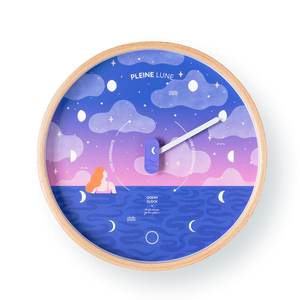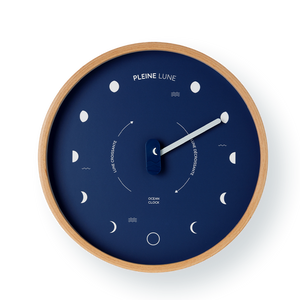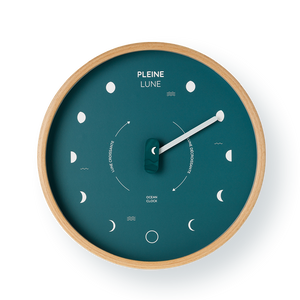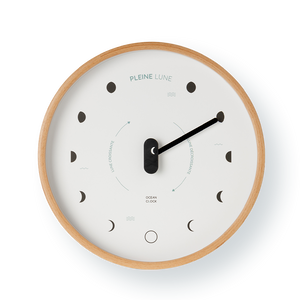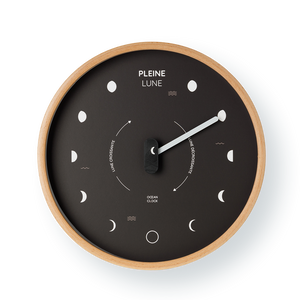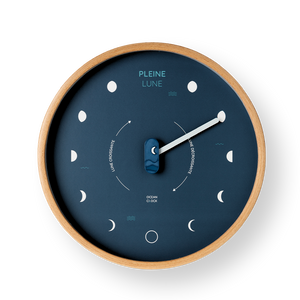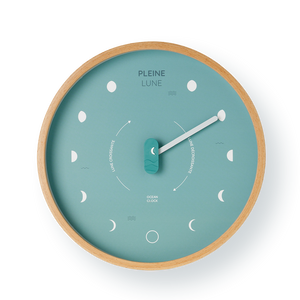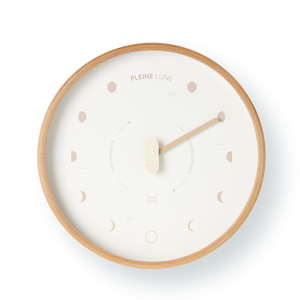In summer, the weather plays an important role in planning your vacations and summer outings. What could be cooler than having the power to predict the weather! Don't get caught out by rain again thanks to a barometer, the ideal tool for predicting the weather for the next few hours. In this article, we explain the usefulness of a weather barometer and how to interpret a needle barometer .
What is a weather barometer used for?
The weather barometer is an essential tool for understanding short-term weather changes. By observing changes in atmospheric pressure, it is possible to predict future weather conditions such as changes in weather, showers, storms, and high pressure conditions.
In 1643, Italian physicist Torricelli invented the very first barometer in history. This measuring instrument used a column of mercury sealed in a tube to measure atmospheric pressure. Atmospheric pressure is the force exerted by air on a surface. It varies depending on the mass of air above a specific location.
In the following decades and centuries, the mercury barometer was replaced by other measuring instruments using new, less dangerous processes such as aneroid barometers, gas barometers or water barometers.
- The aneroid barometer: how does a needle barometer work ? This type of barometer operates without batteries thanks to a partially air-depleted capsule, called a Vidie capsule. Changes in atmospheric pressure deform this housing, which triggers a mechanism and moves the needle on a dial. It is the most accurate measuring tool for calculating atmospheric pressure.

- Gas barometer: This measures atmospheric pressure using a volume of enclosed gas that expands or compresses depending on the pressure. This measuring instrument requires correction because the volume of gas depends on the temperature.
- Water barometer: This barometer uses changes in water level to measure atmospheric pressure. It works on the principle that water rises or falls in a tube depending on atmospheric pressure. This type of barometer is less accurate than others, but it is sometimes used for educational or decorative purposes.
Despite these numerous techniques for measuring atmospheric pressure, the aneroid barometer remains the most accurate tool for forecasting the weather. Note that there is also the electronic weather station that provides an indication of atmospheric pressure.
How to interpret a needle barometer?
After telling you about the history and role of the barometer, it's time to learn how to interpret pressure variations to predict the color of the sky for the next 12 to 24 hours.
First, let's remember that the aneroid barometer indicates atmospheric pressure using a dial and a needle connected to its mechanism. When we predict the weather with a barometer, it's not the pressure value that interests us, but its variation. This is what will give us indications of future weather changes.
This is why the aneroid barometer contains a reference needle. This needle, represented by a wooden lightning bolt on the original Ocean Clock barometer , allows users to quickly visualize changes in atmospheric pressure.

Black Barometer - Ocean Clock
To properly use a needle barometer, you must first place the reference needle on the needle that indicates atmospheric pressure in hPa. Then, tap firmly on the glass to make the mechanism react to the change in pressure and release the needle.
Thanks to the indicator needle, you can observe at a glance the evolution of the atmospheric pressure in your location.
After performing this daily routine, you need to be able to interpret these indications to predict the weather for the day. Weather forecasts depend on whether atmospheric pressure is rising or falling. You must therefore observe the needle's behavior, that is, the speed and direction of its movement.
Atmospheric pressure increases :
- If the needle is above sea level pressure, 1013 hPa , and moves to the right of the dial, it means that the weather will remain calm and stable.
- If the needle is below 1013 hPa , and is moving towards the right of the dial, this indicates an improvement.

The pressure drops gradually :
- If the needle is above 1013 hPa and is gradually moving to the left , then the weather will change very little and remain calm.
- If the needle is below 1013 hPa and moving slowly to the left , it is often a sign of rain.

The pressure drops suddenly :
- If the needle is above 1013 hPa and moves sharply to the left , the sky will become cloudy and there is a chance of rain.
- If the needle is below 1013 hPa and suddenly moves to the left , this indicates a strong wind and a possible storm.


The pressure remains stable : It may happen that the needle does not move for several days, even when you tap on the barometer glass. This means that the atmospheric pressure is stable, and that the weather will not change for the next few hours.
The speed of changes in atmospheric pressure provides further insight into the duration of new weather conditions. Rapid changes often indicate turbulent weather and abrupt changes, while slower changes suggest gradual developments in conditions.
Using a barometer gives you an idea of how the weather is going to evolve. It's worth noting that it's important to consider other factors besides atmospheric pressure, such as temperature, wind, and humidity. With this data, you'll get a more comprehensive weather forecast and become a true meteorologist.

